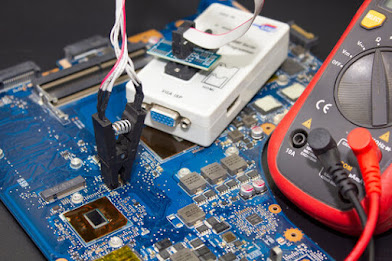HARDWARE TECHNICIAN
As a Laptop technician, you must understand a basic rule of business, time is money. Whether you are boss or work for someone else, the ability to identify and isolate a Laptop fault quickly and decisively is very important to the success of your business. It requires some common sense, and a little bit of focus.
It also requires an understanding of the troubleshooting process, and reliable plan of action. Even though the number of Laptop configuration and setups are virtually unlimited, the methodology used to
approach each repair is always about the same. This introduction is intended to isolate the concepts of
basic troubleshooting and show you how to apply basic laptop repair steps that will help you narrow the
problem down before you even take a screwdriver to the Laptop. By applying a constant technique. You
can safe precious time from every laptop repair.
The General Troubleshooting Steps
Regardless of how your particular Laptop might be, a dependable Troubleshooting steps can be broken
down into four basic steps.
#1: Define your symptoms,
#2: Identify and isolate the location of your problem
#3: Replace the suspected component, and
#4: Re-test the component thoroughly to be sure that you have solve the problem.
If you have not solved the problem, start again from step #1:This is a “universal” procedure that you can apply to any sort of troubleshooting not just for Laptops.
DEFINE YOUR SYMPTOMS
When a Laptop breaks down, the cause might be a simple as a loose wire or a connector, or as
complicated as an IC or component failure. Before you start, you must have a good understanding of all
the symptoms. Think about the symptoms carefully. By recognizing and understanding your symptoms,
it can be much easier to trace a problem to the appropriate component. Take the time to write down as
many symptoms as you can. As a Laptop technician, you must often write problems and solutions for
reference purposes.
IDENTIFY AND ISOLATE
Before you try to isolate a problem within a piece of Laptop hardware, you must first be sure that the
equipment itself is causing the problem. In many cases, this will be fairly obvious, but some situation
might not be. A faulty or improperly configured piece of software can cause confusing system errors.
When you are sure that it is a system’s hardware failure, you can begin to identify which component
fails.
REPLACE
Because Laptops are designed as a sub-unit, it is almost always easier to replace a sub-unit outright,
rather than attempt to repair the sub-unit to its component level. Even if you had the time, to isolate
defective component, many laptop parts are not inter-changeable, so it is better to replace the defective
part than try to repair it
RE-TEST
When a repair is finally complete, the system must be reassembly carefully before testing it. All guards,
housings, cables and shields must replaced before final testing. If symptoms persist, you will have to
reevaluate the symptoms and narrow the problem to another parts of the equipment. If normal operation
is restored (or greatly improved), test the computer’s various function. When you can verify that the symptoms have stop during actual operation, the equipment can be returned to service. As a general rule, it is wise to let the system run for at least 24 hours to ensure that the replacement sub-assembly will not fail prematurely.
Do not be discouraged if the equipment still malfunctions. Maybe software settings and device drivers
may need to be updated to. If you are tired simply walk away, clear your hand, and start again by defining the current symptoms. Never continue with a repair if you are tired or frustrated tomorrow is
another day. Even the most experienced troubleshooters get overwhelmed from time to time.
ITS VERY IMPORTANT FOR YOU TO ALREADY HAVE CORE KNOWLEDGE BEFORE TRYING TO LOOSE OR WORK ON ANY HARDWARE PART OF COMPUTER (MOTHERBOARD).






very impotent tips thanks for sharing
ReplyDeleteVisit My website :- Senior Dating Sites